Monster Hunter: World (Xbox One) Review
By Josh Di Falco  06.02.2018
06.02.2018
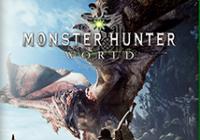
There are not a lot of moments in videogames that successfully bridge the gap between the most hardcore fans and newcomers. Too often, though, franchises get so deep into their life-cycle that any form of reinvention to grab new customers seems impossible without disrupting the loyal. Capcom's latest entry in the Monster Hunter franchise tries to open its doors for everyone, while keeping the stalwarts satisfied, and fortunately it does a commendable job. Monster Hunter: World is a vast and luscious world, with colossal monsters prowling the landscapes, while great apex predators lurk from the sky and below. This is not for the faint-hearted.
The opening stages of the game try to deliver an engrossing context in order to set the stage for the monster hunting that is to come. When the Fifth Fleet is sent to the New World in order to aid in the research of the movements of the Elder Dragon, called Zorah Magdaros, their arrival gets off to a rocky start. Upon creating the look of the controlled hunter, the adventure then initiates the tutorial in order to educate those with the mechanics. If there is one adage that Monster Hunter: World takes literally, it is to never stop learning.
Monster Hunter: World does a great job of drip-feeding all the required information and mechanics in order to get the most out of this journey. Bit by bit, it builds up all the different systems that soon mesh together into quite a complex matrix, one that takes countless hours to finally get on top of. Of course, the integration of new systems never stops flowing, as new layers constantly stream in to further change up the journey.
Unfortunately, for some, the story is not a high point, as the awkward lip-sync issues and on-again/off-again audio dialogue with the text-only lines can throw the uninitiated off. However, the scenes do a fantastic job of introducing new monsters, while showcasing the various locales that look as beautiful as any title ever has on current hardware. One thing that is quite impressive is when the cut-scene switches to gameplay immediately, without the quality of the world or monsters dipping from the cut-scene counterparts. Of course, though, as uninspired as the story is, it really just acts as a conduit for what fans of the franchise have really come for: hunting the monsters.
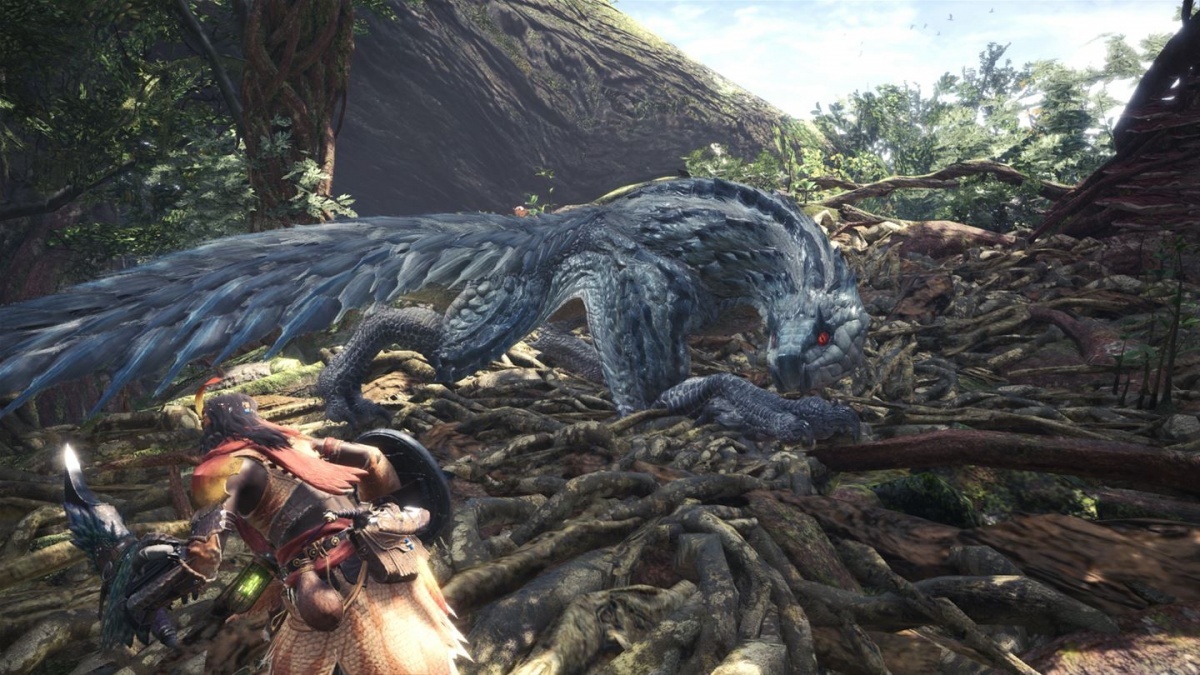
The act of slaying these monsters follows a pattern that quickly paves the way for how the remaining hundred plus hours will go. Each monster hunt requires doing the preliminary research in order to get a gauge of the monsters' elemental strengths and weaknesses, as well as the weak points on their body. Then there's the gearing up stage, where a plethora of weapons are on offer, each with various upgrades that deal elemental attacks, while armour is paramount to surviving these battles long enough to see it through to the end. Once that is completed, then the hunt begins.
Rather than throw a hunter into the wild to chase down specific monsters in a vast world, the game combats this by offering Scoutflies, who act as a form of breadcrumbs towards the monster. Of course, the Scoutflies cannot just point the way to these beasts. Instead, searching around for the monsters' footprints, skid marks or any other form of clue will build up a meter, upon which the Scoutflies will then pick up the scent, and then they are able to work like an in-game GPS to the monsters' locations. While they serve a real practical purpose, they are also visually beautiful to look at as they weave throughout the world, pointing out items of interest to loot from. The hunter is also accompanied by a cute, furry friend called the Palico. Resembling cats, these friends are act as a support unit that provides health, while helping to shake off confused states.
The gameplay loop of hunting monsters in order to earn materials in order to upgrade the weapons in order to take on bigger baddies is an addictive one. With 14 base weapons on offer from the get go, each representing their own character class, the art of experimentation between what weapons are required with specific monsters, or even just trying to find the right weapon that feels good to the hunter becomes a game in itself. There is no one-size-fits-all, and this further highlights the importance of trying out each of the weapons, even if some weapons sound absurd.
This further opens up the door for multiple different play-styles and sets, as soon enough a plethora of armour options open up. The five-piece armour sets contain specific skills that will not apply to every monster. Mixing and matching these pieces in order to maximise the designated skills to successfully combat the monster next on the rank of the hunt sheet is another fun game, and they can be upgraded to further boost defence.
Upgrades cost lots of material, many of which are found on the bodies of the slain monsters. While this does open up the doors for the act of "grinding" in order to get the wanted pieces of armour and weapons, that is unfortunately par for the course in these sorts of titles. However, to its credit, Monster Hunter: World does not require an immense amount of "grinding," as many of the materials collected from the various monsters in the main story are enough to live off, and any further materials are only limited to a handful of repeated monster fights to earn them.
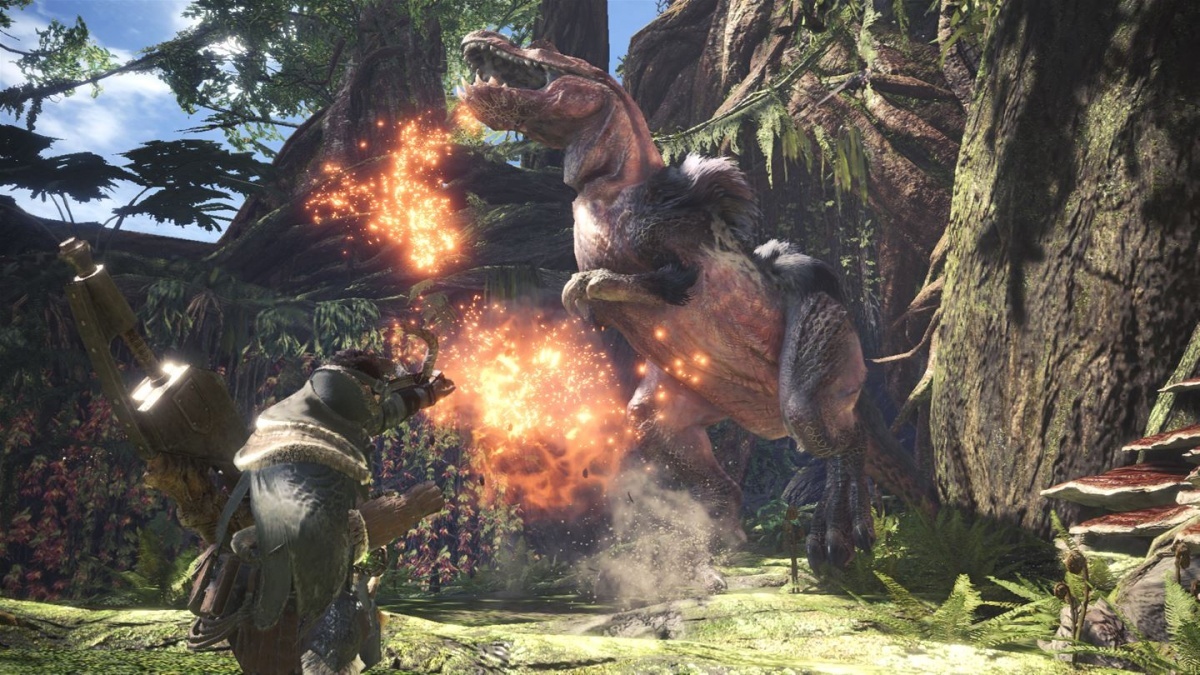
Soon, more systems come into play with Bounties and Deliveries adding to the "optional" tasks, while the helpful Palico Safari can be deployed onto expeditions in order to gather additional resources simultaneously as playing the game, while the "Special Arena" sets challenges against the monsters with siege weapons to take them down. Eating at the canteen rewards with helpful buffs or defences that only last for the next mission, or until the hunter faints. Juggling all these, while managing the Ancient Tree in order to grow more resources, is a fun diversion to do in-between monster hunts.
The monster hunts themselves unfortunately find themselves lacking a bit. While the act of stalking these predators and prepping for them is fun, the actual combat mechanics are a somewhat clunky version of what similar games have done better. While two-handed weapons are supposed to be slow due to their sheer size and power, Monster Hunter: World makes it incredibly difficult to land a blow against these fast-moving enemies, while dodging out of the way of incoming attacks barely avoids the onslaught. Equipping the Insect Glaive spear enables air-attacks, which is especially useful against winged-monsters, but the fixed camera has trouble staying on the monster in question. Changing the fixed camera to manual movement is further troubling and does not fix the issue.
Another complaint is that even though the monster fights themselves like to appear as complicated chess games that require anticipation and precision striking to hit those weak spots, the hit boxes never seem to be consistent. While the top of the head may serve as a weak spot for some monsters, average hits of 30-40 points will suddenly dip to the low 5s as the game may register a wing getting in the way even if the animation does not back it up. The hit box on the hunter also seems to change; sometimes a hit from a monster will register, regardless whether the hunter dodged in time and the animation didn't collide.
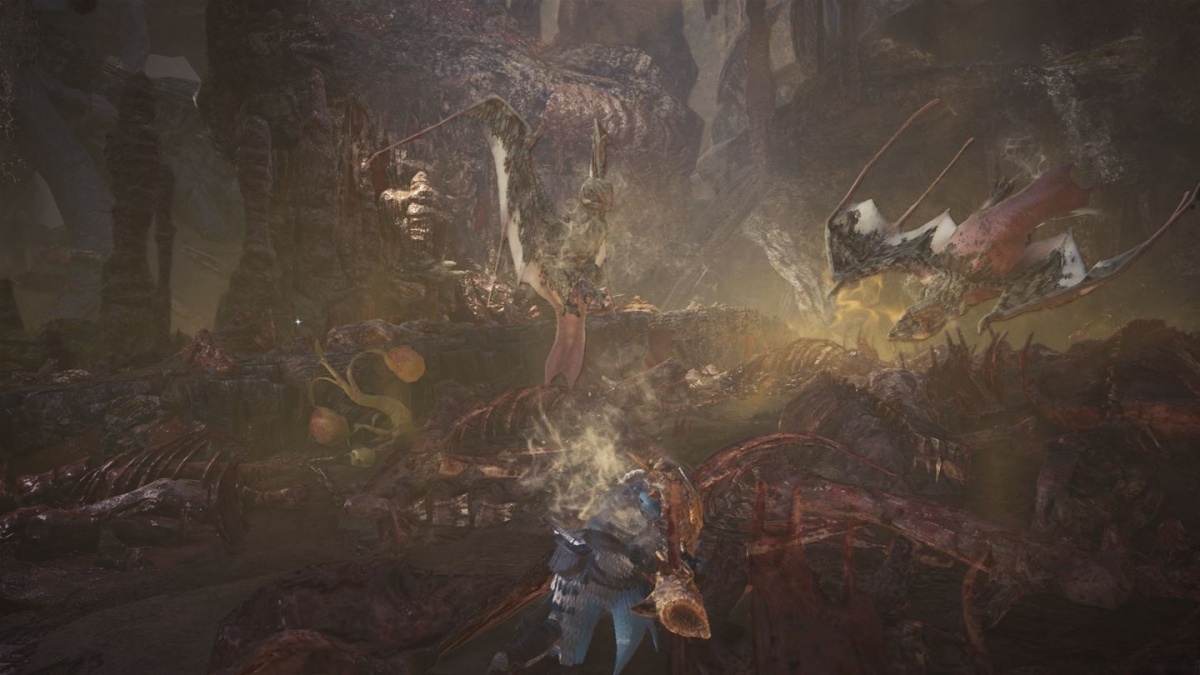
The difficulty curve is not one to shirk at. Monster Hunter: World is quite difficult, especially when going at it solo. Fortunately, the always-online mentality works here, because oftentimes when there's a situation where help is wanted, the hunter can send up an SOS flare, and others can jump right in and help combat the threatening monster. As each monster hunt acts like a quest, hunters can queue up for a co-op hunt, although once the hunt is finished, the joining hunters are thrown out. This can be annoying for those wanting to stay together for the long haul, and trying to find each other can be a pain as it is merely a first-come, first-serve basis, although putting in a password to make the session private seems to be the way to go.
The world is quite spectacular, in that it seems to continue even when the hunter is not out there influencing things. The ecosystem is created to allow all these monsters to roam around their areas in peace and harmony; well almost. Initiating fight sequences with monsters will soon disrupt these systems, and more fun and mayhem will be had when a turf war is started due to a monster encroaching into the territory of another. A fight with a Rathian in the Wildspire Wastes quickly turns sour, when the Rathian falls through the sand down into the underground cave of the Diablos, for instance; upon which the latter monster powers over the Rathian and causes considerable damage.
It is these kinds of random encounters that really showcase the best that Monster Hunter: World can do. Seeing titanic monsters taking each other on, during the midst of a hunt, with a whole host of smaller monsters that act more as annoyances than actual threats is a wonderful sight to behold. These monsters in all their fearsomeness look absolutely majestic, and seeing them go down with broken limbs and hearing their screams and whelps is agonisingly painful to listen to when dealing that killer blow.
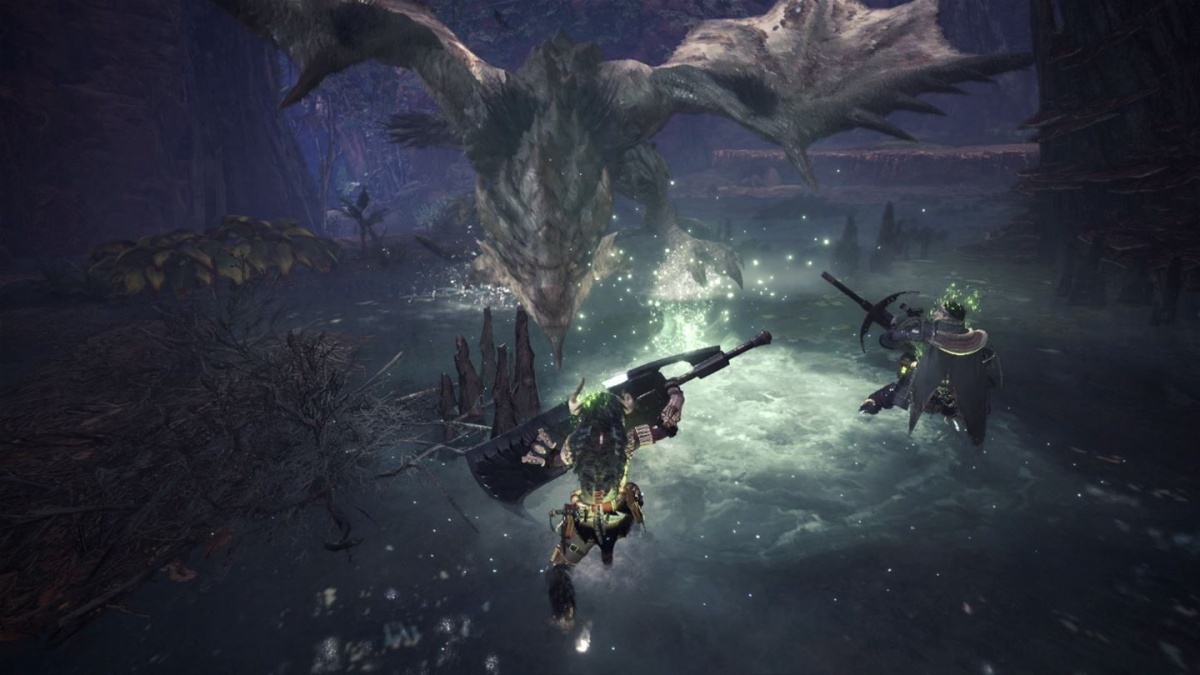
Cubed3 Rating
Exceptional - Gold Award

Monster Hunter: World is a vastly complex action-adventure game littered with plenty of menus that customise the various weapons and armour pieces, while gathering useful resources to assist the hunter in taking down the next big monster. The gameplay loop of hunt-upgrade-hunt-upgrade is an addictive one that rarely stumbles into "grinding" territory, although some may see the whole game as a grind. Fans of the long-running series will find plenty to love with this latest edition, although newcomers will have an accessible title with which to dip their toes into. Do not be fooled, though, as this is not an easy game that sugar-coats the experience. Monster Hunter: World is hard, but it is satisfying to do the homework on each monster, preparing well for them before dishing out some hunting justice and slaying them for their materials. While the battle system can be mechanically clunky, and issues will surely arise in every fight, this is by no measure a deal breaker, as the majestic monsters and beautiful locations with the addictive gameplay loop and complex systems more than make up for it.

![]() 9/10
9/10
![]() 0
(0 Votes)
0
(0 Votes)
 Out now
Out now  Out now
Out now  Out now
Out now  Out now
Out now Comments
Comments are currently disabled

 Sign In
Sign In Game Details
Game Details Subscribe to this topic
Subscribe to this topic Features
Features





 Top
Top

